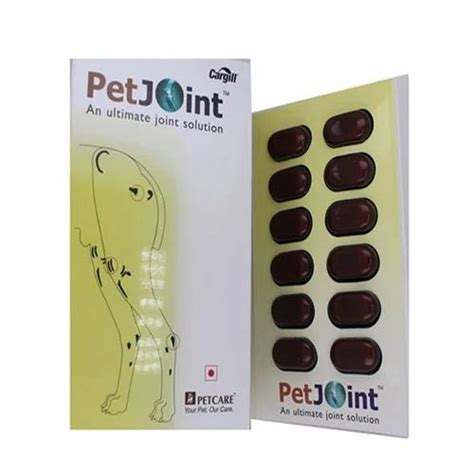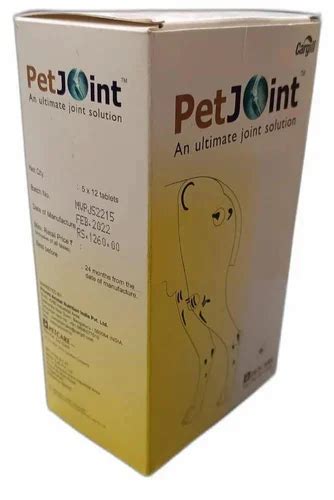Key Takeaways
Preventing arthritis in pets starts with understanding joint care basics. Balanced exercise and weight management are foundational—excessive strain or obesity accelerates joint wear. A preventive veterinary care plan, including annual checkups, helps catch early signs like stiffness or reluctance to move.
“Proactive care reduces arthritis risk by up to 40% in pets,” notes Dr. Sarah Lin, a veterinary rheumatologist.
| Strategy | Benefit |
|---|---|
| Controlled exercise | Strengthens muscles without overloading joints |
| Nutrient-rich diet | Supports cartilage health (e.g., omega-3s, glucosamine) |
| Regular vet visits | Early detection of mobility issues |
For diet strategies, focus on high-quality proteins and anti-inflammatory ingredients. Consider natural supplements to boost joint resilience. Senior pets need tailored routines—shorter walks and softer bedding minimize discomfort.
Spotting early symptoms—limping, licking joints, or reduced activity—ensures timely intervention. Pair this with low-impact exercises like swimming to maintain mobility safely.
Tip: Use puzzle feeders to engage pets mentally while controlling calorie intake.
Consistency in these practices builds long-term joint health, keeping pets active and pain-free.

How to Prevent Arthritis in Pets
Preventing arthritis in pets begins with proactive joint care and lifestyle adjustments tailored to their needs. Early intervention is critical, as joint damage often starts long before symptoms appear. Start by maintaining a balanced exercise routine—low-impact activities like swimming or leash walks strengthen muscles without straining joints. Avoid overexertion, especially in breeds prone to hip dysplasia or other genetic conditions.
Weight management plays a pivotal role, as excess body weight increases pressure on joints. Work with a veterinarian to determine ideal calorie intake and adjust diets with joint-supporting nutrients like omega-3 fatty acids or glucosamine. Incorporate measured portions and avoid overfeeding treats.
Regular preventive veterinary care helps catch subtle changes early. Annual checkups should include joint mobility assessments and discussions about supplements or prescription diets. For senior pets, consider biannual visits to monitor age-related wear.
Lastly, create a joint-friendly environment at home. Provide orthopedic bedding, non-slip flooring, and ramps for high furniture to reduce jumping. Combining these strategies fosters long-term joint health, delaying or even preventing arthritis development in active and aging pets alike.
Essential Joint Care Tips for Dogs
Proactive joint care for pets begins with understanding how daily habits impact long-term mobility. For dogs, balanced exercise is critical—too much high-impact activity can strain joints, while too little leads to stiffness. Low-impact activities like swimming or leash walks help maintain muscle strength without overexertion. Incorporate joint supplements containing glucosamine or chondroitin into their diet, as these nutrients support cartilage health.
Equally important is providing orthopedic beds or padded resting areas to reduce pressure on hips and elbows during sleep. Monitor your dog’s posture and movement patterns; limping or reluctance to climb stairs may signal early discomfort. Preventive veterinary care includes routine checks for joint alignment and flexibility, especially in breeds prone to hip dysplasia.
Avoid slippery floors by using rugs or mats, as unstable surfaces increase injury risks. For older dogs, consider ramps to minimize jumping on furniture. Combining these strategies with managing pet weight—a key factor in reducing joint stress—creates a comprehensive approach to safeguarding your dog’s mobility. Always consult your vet before starting new supplements or exercise routines to ensure they align with your pet’s specific needs.
Weight Management for Joint Health
Maintaining a healthy weight is one of the most effective ways to protect your pet’s joints from stress and long-term damage. Excess body weight places unnecessary pressure on hips, knees, and elbows, accelerating wear on cartilage and increasing the risk of arthritis development. For every pound over their ideal weight, pets experience up to four times more strain on their joints—a critical factor in preventive care.
Start by evaluating your pet’s diet. Portion control and high-quality, nutrient-dense food help avoid overfeeding, while limiting calorie-heavy treats prevents gradual weight gain. Work with your veterinarian to determine an ideal weight range for your pet’s breed and age, adjusting meals as needed.
Low-impact exercise like leash walks or swimming strengthens muscles around joints without excessive stress. Avoid sudden, intense activities that could strain ligaments, especially in older pets. Regular weigh-ins and body condition scoring (BCS) ensure progress stays on track.
If your pet is already overweight, focus on gradual weight loss—rapid reductions can harm metabolism. Combining controlled feeding with tailored activity not only supports joint health but also boosts overall mobility. Remember, preventive veterinary care includes routine weight assessments to catch issues early, keeping your pet agile and pain-free for years.
Importance of Annual Vet Checkups
Regular veterinary visits are a critical line of defense in protecting your pet’s joints and preventing conditions like arthritis. During these exams, vets assess range of motion, check for signs of stiffness, and evaluate overall mobility. Early detection of joint issues is key—diagnostic tools such as X-rays or blood tests can identify subtle changes long before visible symptoms appear.
Preventive veterinary care also allows professionals to tailor recommendations based on your pet’s breed, age, and lifestyle. For example, large breeds prone to hip dysplasia may benefit from earlier interventions, while senior pets might require adjusted exercise plans. Vets can also monitor managing pet weight, a major factor in reducing joint stress, and suggest dietary adjustments or joint supplements if needed.
These checkups create a baseline for tracking health trends over time, ensuring small concerns don’t escalate. By combining at-home care with expert guidance, you’re not just treating problems—you’re building a foundation for lifelong joint health. Consistent visits reinforce the connection between daily habits and long-term wellness, bridging gaps that even attentive owners might miss.
Exercise Routines for Healthy Joints
Regular physical activity plays a critical role in maintaining joint health and reducing the risk of pet arthritis. Low-impact exercises like swimming or controlled leash walks help strengthen muscles around joints without stressing them. For dogs, aim for 20–30 minutes of activity daily, adjusting intensity based on breed and age. Overexertion, especially in puppies or senior pets, can strain developing or aging joints—opt for short, frequent sessions instead of prolonged play.
Incorporate interactive games that encourage gentle movement, such as hide-and-seek with treats or slow-paced fetch on soft surfaces. Avoid activities involving abrupt stops or jumps, which may accelerate wear on cartilage. For cats, use feather toys or laser pointers to promote stretching and controlled leaps.
Managing your pet’s weight through exercise is equally vital—excess pounds increase pressure on hips and knees. Pair physical activity with a balanced diet to maintain an ideal body condition. Always consult your veterinarian to tailor routines to your pet’s needs, particularly if they show early signs of stiffness. Consistency in daily movement supports joint flexibility, making it a cornerstone of preventive veterinary care for lifelong mobility.

Spotting Early Arthritis Symptoms
Early detection of arthritis is critical for managing your pet’s comfort and mobility. While joint degeneration often develops gradually, subtle behavioral changes can signal discomfort. Watch for stiffness after rest, particularly in the morning or after naps. Pets may hesitate to jump onto furniture, climb stairs, or show reduced enthusiasm for walks. Limping or favoring one limb, especially following activity, is another red flag.
Pay attention to grooming habits—overlicking specific joints or visible swelling around knees, hips, or elbows could indicate inflammation. Behavioral shifts like irritability or withdrawal from interaction may also reflect chronic pain. Senior pets are at higher risk, but younger animals with genetic predispositions or past injuries can develop symptoms too.
Regularly assess your pet’s mobility during play or exercise. A sudden reluctance to run, chase toys, or difficulty rising from lying down warrants closer attention. Weight management plays a role here, as excess pounds strain joints and accelerate wear. If you notice these signs, schedule a preventive veterinary care visit. Vets use physical exams, gait analysis, and imaging to confirm early-stage arthritis, allowing for timely interventions like supplements or modified exercise plans.
By recognizing these cues early, you can adapt your pet’s routine to slow disease progression and maintain their quality of life.

Diet Strategies for Joint Protection
A balanced diet plays a foundational role in supporting joint health and slowing the progression of age-related wear. For pets prone to arthritis, incorporating omega-3 fatty acids—found in fish oil or flaxseed—can reduce inflammation and improve mobility. Similarly, foods rich in antioxidants, such as blueberries or spinach, help combat cellular damage that weakens cartilage.
Glucosamine and chondroitin are key supplements often recommended by veterinarians to maintain connective tissue elasticity. These nutrients can be added through specialized diets or vet-approved chewables. For pets with existing joint concerns, hydrolyzed collagen may also aid in rebuilding cartilage structure.
Weight management remains critical, as excess pounds strain joints. Opt for high-protein, low-calorie formulas tailored to your pet’s activity level, and avoid overfeeding treats. Hydration is equally important—ensure fresh water is always available to keep joints lubricated.
Lastly, consult your vet about prescription diets designed for joint support, particularly for breeds predisposed to arthritis. By combining targeted nutrition with regular monitoring, you create a proactive defense against joint deterioration.
Preventive Care for Senior Pets
As pets age, their joint health requires more intentional support. Preventive veterinary care becomes critical, with twice-yearly checkups recommended to monitor changes in mobility or early signs of discomfort. Weight management remains a cornerstone—excess pounds strain aging joints, increasing arthritis risk. Transitioning to a senior-specific diet rich in omega-3 fatty acids and glucosamine can bolster cartilage strength, while controlled portion sizes help maintain an ideal body condition.
Low-impact exercise, like leisurely walks or swimming, preserves muscle tone without stressing vulnerable joints. Environmental adjustments, such as orthopedic bedding or ramps for high surfaces, reduce physical strain. Veterinarians may suggest joint supplements or anti-inflammatory medications tailored to your pet’s needs. Regularly observing behavior—hesitation to climb stairs or stiffness after rest—helps catch issues early. By combining these strategies, owners can significantly slow joint degeneration, ensuring senior pets enjoy comfort and mobility in their golden years.
Conclusion
By combining preventive veterinary care with daily attention to your pet’s needs, you can significantly reduce the risk of arthritis. A proactive approach—such as monitoring weight, maintaining balanced exercise routines, and prioritizing joint-friendly nutrition—lays the foundation for long-term mobility. Regular vet visits allow for early detection of subtle changes, while adjustments to diet or activity levels help address risks before they escalate.
For aging pets, consistency in joint care for pets becomes even more critical. Small actions, like providing orthopedic bedding or incorporating low-impact play, can ease stress on joints over time. Remember, managing pet weight isn’t just about appearance; it directly impacts pressure on hips, knees, and elbows. Pairing these efforts with supplements or tailored nutrition recommended by your vet ensures a holistic strategy.
While arthritis can’t always be prevented, a focus on pet joint health empowers owners to slow its progression and improve quality of life. Stay observant, stay informed, and let your pet’s habits guide your care decisions.
Frequently Asked Questions
What are the earliest signs of arthritis in pets?
Look for stiffness after rest, reluctance to jump or climb stairs, and reduced activity. Weight management and early preventive veterinary care can slow progression.
How often should pets exercise for joint health?
Aim for daily low-impact activities like leash walks or swimming. Avoid overexertion—balanced exercise protects cartilage without straining joints.
Can diet alone prevent arthritis?
While a nutrient-rich diet supports joint care for pets, combine it with weight control and supplements like omega-3s for optimal protection.
Are certain breeds more prone to joint issues?
Large breeds and seniors face higher risks. Start preventive care early, including annual vet checkups, to monitor joint health.
Do joint supplements work?
Studies show glucosamine and chondroitin can improve mobility. Always consult your vet before adding supplements to your pet’s routine.
Why is weight management critical?
Excess weight stresses joints—managing pet weight reduces arthritis risk by up to 50%. Measure meals and limit treats.
When should senior pets start preventive care?
Begin joint protection strategies by age 5-7, depending on breed. Regular vet visits help adjust care as needs change.
Explore Joint-Support Products for Your Pet
For vet-approved joint care supplements and mobility aids, please click here: https://forherhim.com/product-category/forit/.






